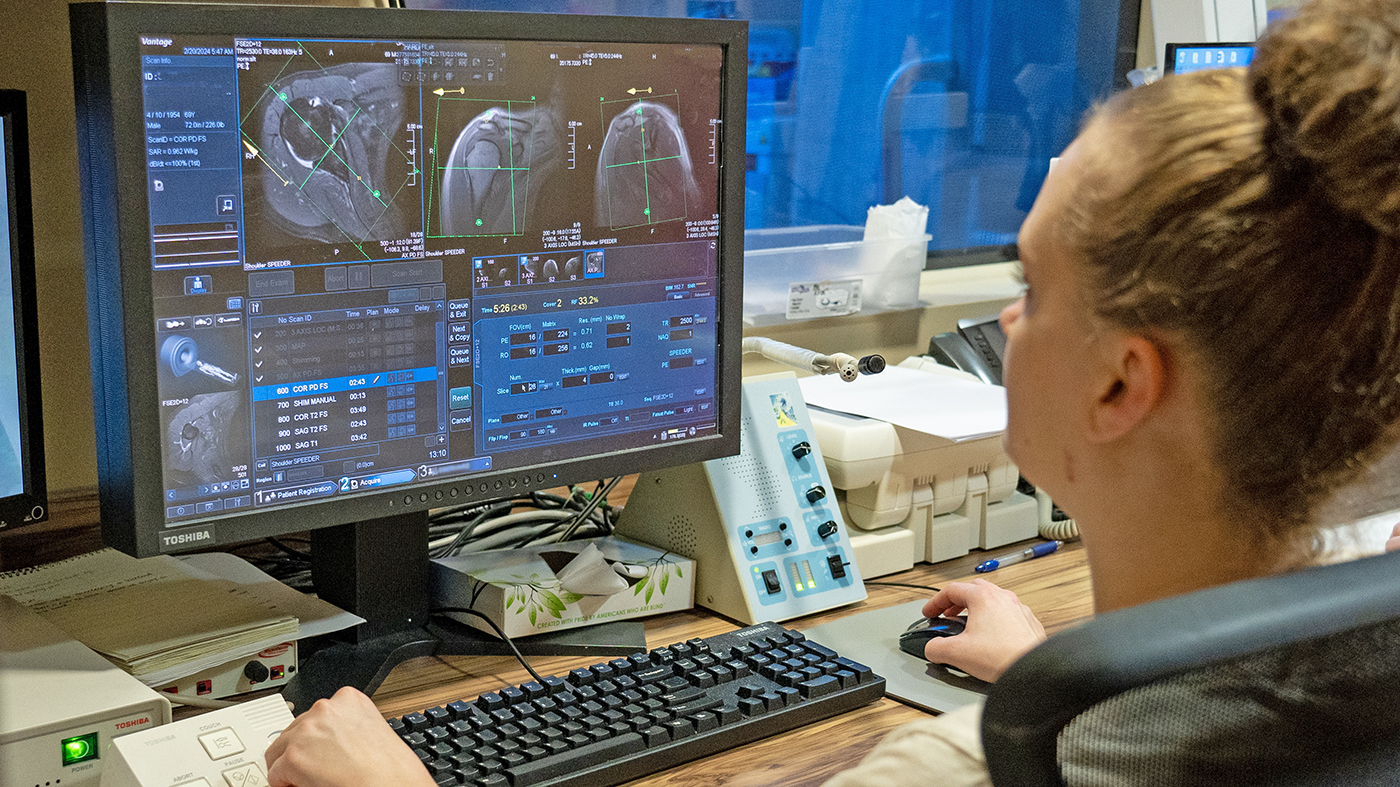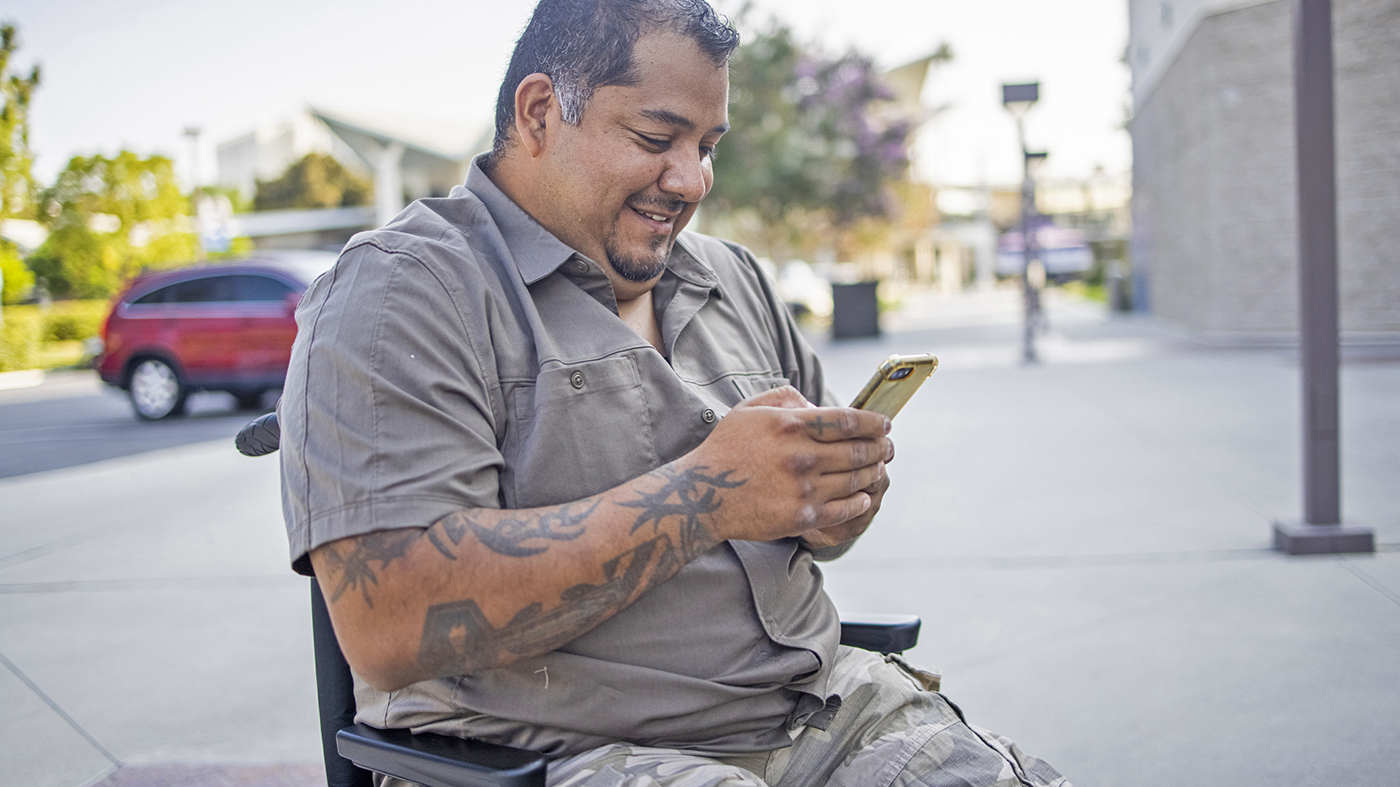William Roentgen discovered X-radiation in 1895, an event that birthed modern radiology. Subsequent discoveries led to computed tomography (CT), ultrasonography (US) and magnetic resonance imaging (MRI), all of which have changed the perception of how scientists and researchers were able to view the internal body.
Today, these medical practices take providers and clinicians beyond guessing, giving them insight toward the answers they need to provide future care and treatment.
There are many types (or modalities) of medical imaging procedures. One is ionizing radiation to generate images of the body, like computed tomography (CT), fluoroscopy and radiography (“conventional X-ray” including mammography).
“We can see inside the patient, and this tool allows us to add another piece of the puzzle that can add to overall better Veterans’ care. Just like laboratory and PACT Teams, we are another piece of that health care puzzle,” said Angela Alvey, Battle Creek VA Radiology supervisor. “Physicians can take information they are seeing from the images we provide and use that to further the diagnosis of a potential problem.”
Because some diagnoses are part of a health monitoring plan, it results in staff seeing individual Veterans regularly.
“There was one Veteran receiving treatment for liver cancer and [he] required imaging every couple of months; [he was] experiencing one of the roughest times of his life, and he was so sweet and calm like he had everything figured out,” said Courtney Wozniak, MRI technologist. “He stands out for me and made me feel better just in conversation with him as if he knew he was going to be okay. After two years of imaging, he was free of the cancer and we were a part of his journey.”
Wozniak is one of 32 staff members of Battle Creek’s radiology service. Each day, her area of radiology performs between 10-16 MRI procedures. This equates to over 5,000 MRI sessions each year. Altogether, Battle Creek’s radiology service performs approximately 43,000 imaging procedures each year.
The value of radiology in health care continues to grow just as the machines and software improves and provides better imaging. These continued improvements in technology can enable a detailed and comprehensive look at what is going on with a Veteran in the moment and serves for better early detection.
“Radiology is a huge technological field, which is one reason why I got into this field—because of the computers, technology and programs,” said Alvey. “It’s a field that is growing immensely with new innovation or software that helps enhance the imaging and the precision of what we provide.”
For the staff in radiology at Battle Creek VA, the sentiment of who they serve is still at the forefront. “The patients we serve here are Veterans who have served others and our country, which not only makes our efforts that much more vital and important but also that much more rewarding,” said Wozniak.
Topics in this story
Link Disclaimer
This page includes links to other websites outside our control and jurisdiction. VA is not responsible for the privacy practices or the content of non-VA Web sites. We encourage you to review the privacy policy or terms and conditions of those sites to fully understand what information is collected and how it is used.
More Stories
In a decentralized clinical trial, Veterans can participate from their own homes or local VA instead of having to travel to a research site.
After serving in the Air Force for 25 years, Larry Wilson is now a My HealtheVet coordinator helping Veterans navigate their care.
Veterans across all 18 VISNs can use VA Health Chat to send messages to VA staff for questions about their health.







As a CT Technologist, it’s beautiful to see the VA recognizing the value of Radiology in health care. Proud to be apart of the profession, and serving other Vets.
Thanks VA
Thank you, and all medical personnel, for also serving. We veterans sincerely appreciate it.